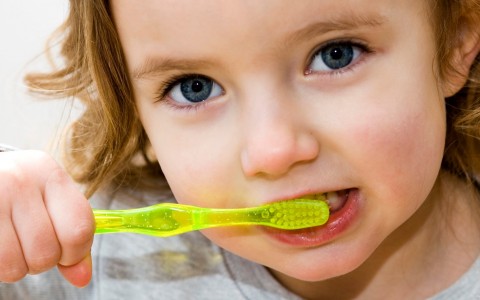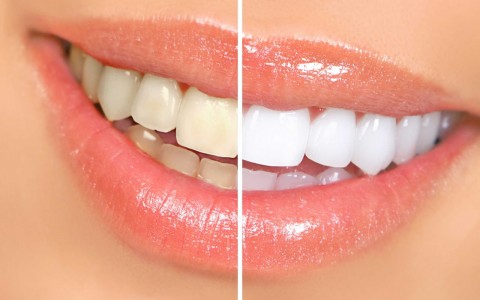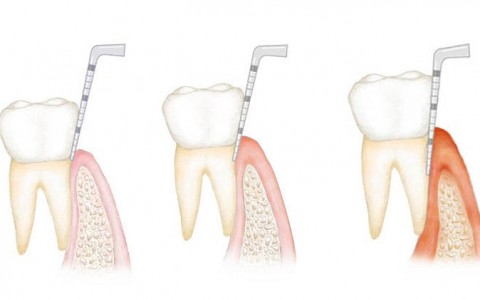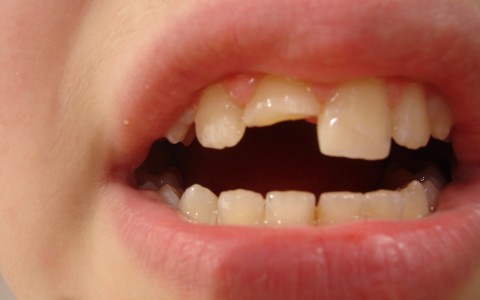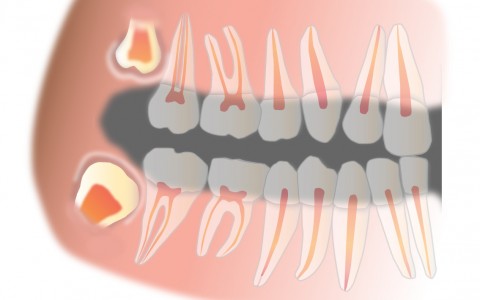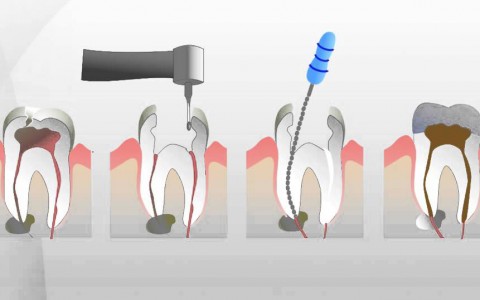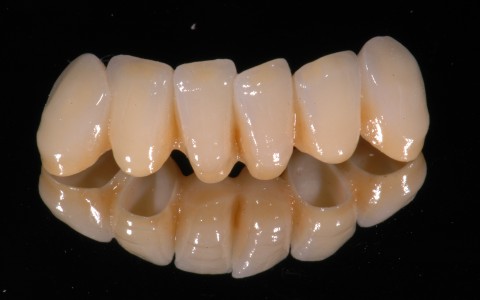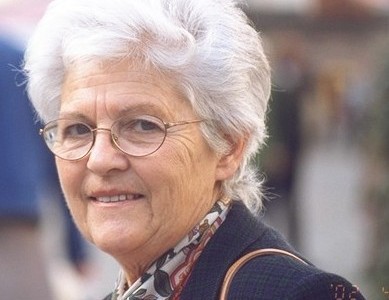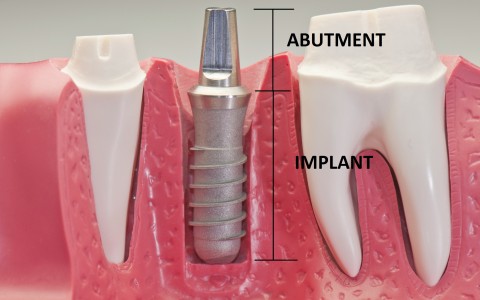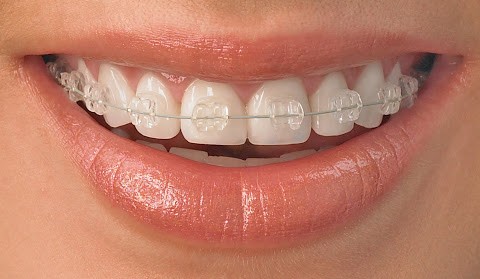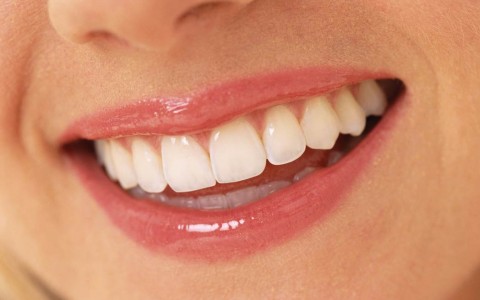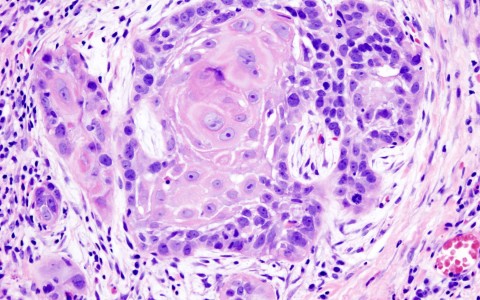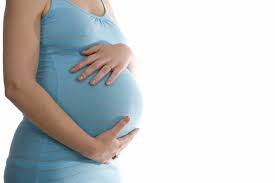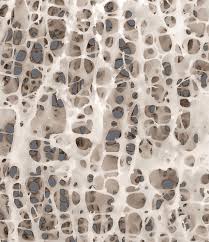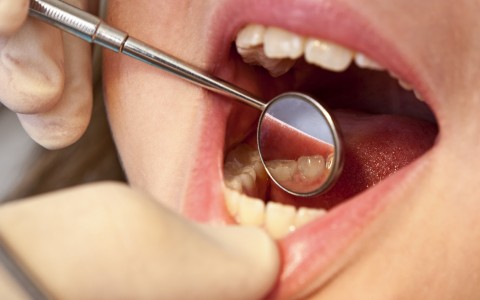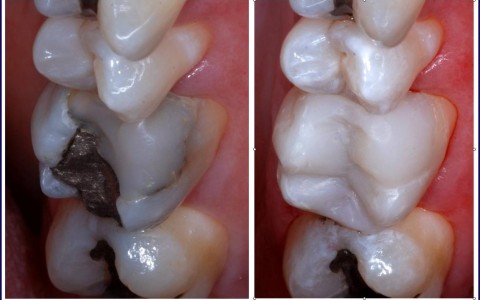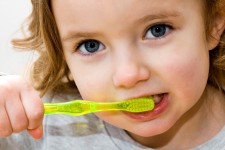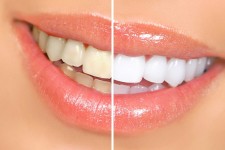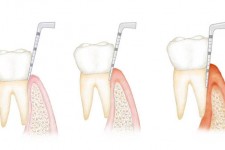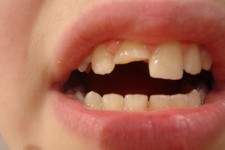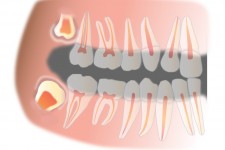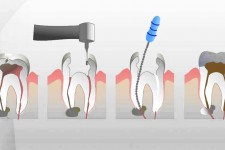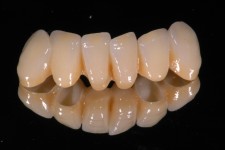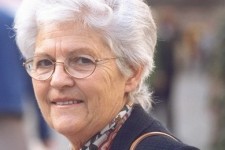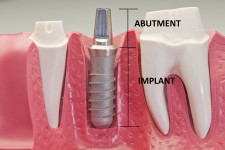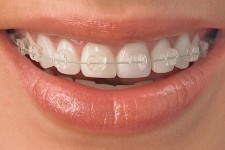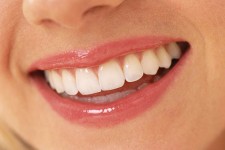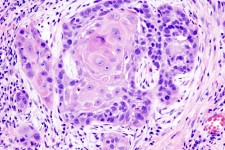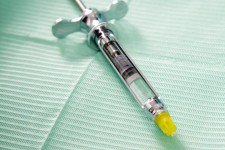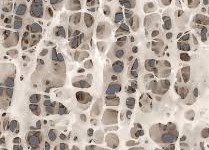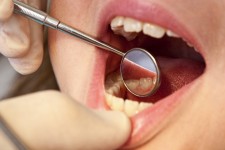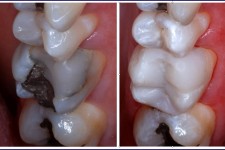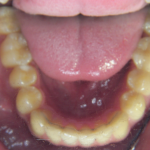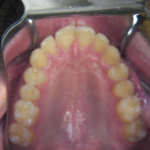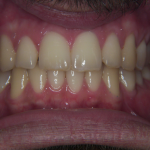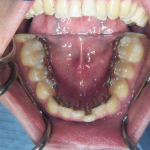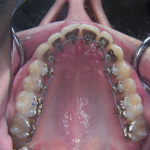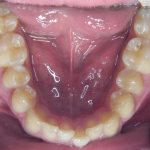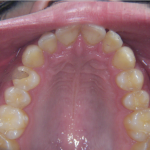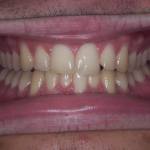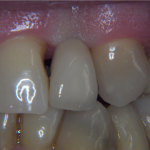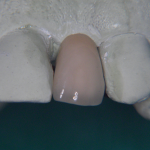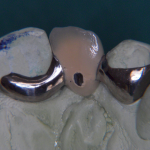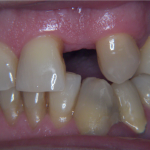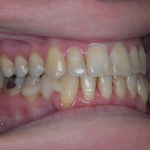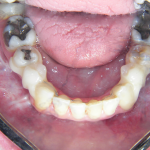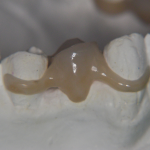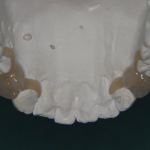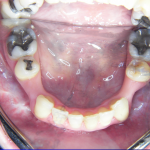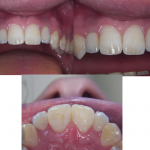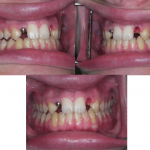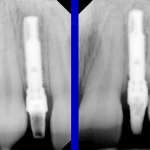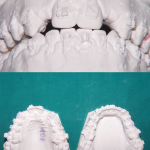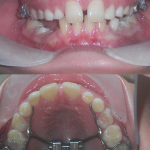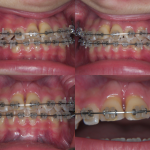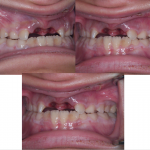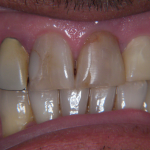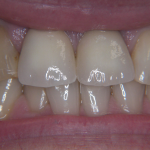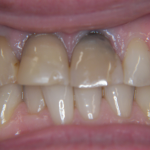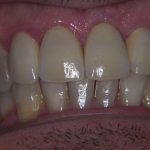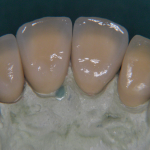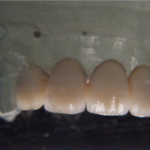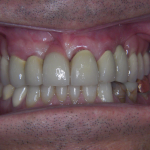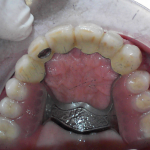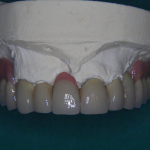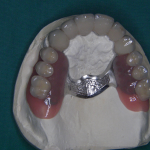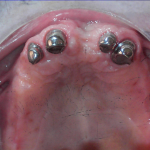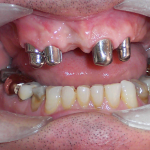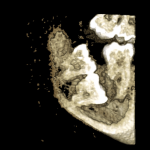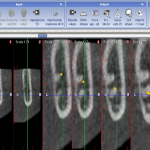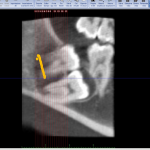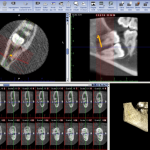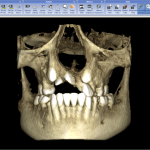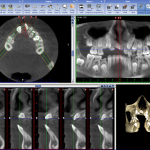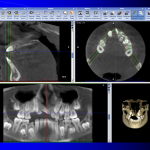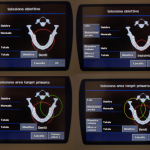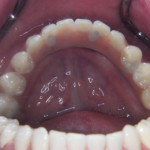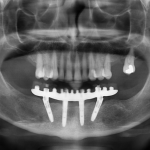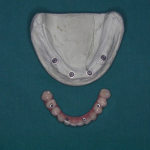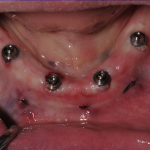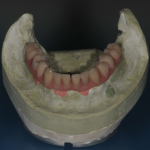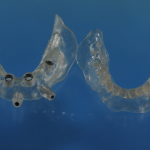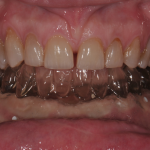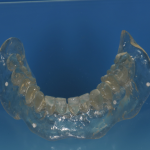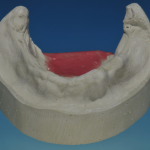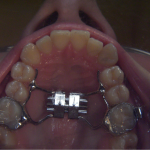It is the maintenance of the health and the physiology of the oral cavity. It reduces the presence of plaque bacteria via professional methods (plaque removal, preventative measures) or dental home care.
The success of every dental and orthodontic therapy depends upon a scrupulous oral hygiene on the part of the patient.
For this reason, we inform and advise our patients of the best home care (utilising toothbrushes, flossing, fluoride prevention), for the teeth and gums.
Plaque bacteria are a resistant biofilm constructed by microorganisms and organic material (carbohydrates, protein, saliva, etc.), and adhere to the surface of the teeth and gums. It’s calcification forms tartar.
Clinical and Cases Activities
- Home
- Clinical and Cases Activities
-
Oral Hygiene
-
Periodontology
Focuses on physics-pathology and immunopathology of the periodontal tissues, which anchor the tooth to the alveolar bone and isolate the sub-epithelial connective tissue from the microorganisms of plaque bacteria.
After the starting examination, the therapeutic procedures can either be non -surgical (elimination of plaque bacteria under the gum by scaling and root planning) or surgical (flaps, open clean out, etc.), with guided regeneration of tissues. -
Dental and Craniofacial Traumatology
Dental and craniofacial traumas are recurrent at infancy, sports and works. These emergencies require specific knowledge of this pathology, prompt intervention and check-ups over an extended period. The specialist gives you an opinion or resolve the emergency without calling Emergency Services. When needed, the specialist could direct the patient to an Emergency Services, or to the Maxillo-Facial Surgical Ward. The biological impact of the various types of trauma, can involve soft tissues (lips, cheeks, muscles, gums and fraenum), and hard tissues (teeth, alveolar bone, skeletal structure, the temporo-mandibular joint)). Dental and craniofacial traumas should involve calling either your dentist or orthodontist in the first instance.
Dental Trauma: What to do immediately?
- Stay calm
- Calm the child – e.g. cuddle
- Treat/cover a possible wound
- Recover the tooth and put it in a physiological solution, e.g water or milk.
- Phone the Specialist to advise of the emergency
- Come to the clinic as soon as possible or go to Emergency of the Maxillo-Facial Surgical Ward.
- Sant’Anna Hospital (Como) ; address :
Phone : + 39 – 031 – 585.9731 Presidio Ospedaliero Ospedale Sant’Anna via Ravona, 20 – 22020 San Fermo della Battaglia (Como) Centralino: 031.585.1 Reparto di Chirurgia Maxillo-Facciale
http://www.hsacomo.org/v2/2/uo/?uo=175&display=0
L’Unità Operativa di Chirurgia Maxillo-Facciale è situata al Piano +2 Giallo, nel settore Degenza Chirurgica 2.
Superata la Hall d’ingresso, prendere gli ascensori per il Piano +2 Giallo, e seguire l’indicazione. http://www.hsacomo.org/v2/2/uo/?uo=175&display=1Dental Trauma: What to know after the event?
Parents will be informed of the phases of healing, the risks and the side effects of the trauma, the medical-legal implications and health insurance.
Reference
LINEE GUIDA NAZIONALI PER LA PREVENZIONE E LA GESTIONE CLINICA DEI TRAUMI DENTALI NEGLI INDIVIDUI IN ETA’ EVOLUTIVA- Novembre 2012- Ministero della Salute
-
Oral Surgery
Today, oral surgery does not only involve the extraction of teeth and wisdom teeth, but also all the methods for guided regeneration of hard tissue (bone) or soft (periodontal), often a preliminary to the positioning of implants.
Moreover, oral surgery supports Orthodontics, in cases such as Orthodontic dental disimpaction. -
Endodontics
Focuses on the physiology and pathology of the dental pulp.
Today, canal therapy allows for the conserving of the tooth, where in the past it was always extracted.
However, the materials, precision and rigour in the methods of intervention, are key to the success of this delicate discipline. -
Fixed prosthesis
Manufactured prosthesis (inlay, onlay, crowns, bridges, Maryland bridge, ceramic facets) restores the anatomy and the function of damaged teeth, particularly in cases where it is impossible or risky to perform just a Restorative procedure.
The aesthetics, anatomical precision and function of the fixed prosthesis performed by the Prosthetic Technician, depend on a number of factors from the precision of the Dentist in the care of the teeth (dental preparation by drilling and impression technique), the health of the periodontal.
The relationship between teeth and the periodontal to the manufacturing of the prosthesis, it’s suitability and biocompatibility, the set-up of the Prosthetic Laboratory (responsible for the choice of materials), the rigour of the preparation procedures and finally the certification and guarantee of the product. For more details, read “Suppliers” -
Removable prosthesis
Removable prosthesis is a valid therapeutic option that restores form, function, and aesthetics in respect to soft tissue of the oral cavity and the physiognomy of the face.
With the invention of Osseointegrated Implantology, the removable prosthesises also have the advantage of anchoring the implants, in order to provide stability as well as comfort for the patient.
The functionality and aesthetic of the product, depends on a number of factors from the precision of the Dentist in their care of the teeth (impression and prosthetic preparation), the health of the periodontal, and the relationship between teeth and the periodontal to the manufacturing of the prosthesis, it’s suitability and biocompatibility, the set-up of the Prosthetic laboratory (responsible for the choice of materials), the rigour of the preparation procedures and finally the certification and guarantee of the product. -
Implantology
Endo-osseousimplantology has recently undergone an incredible evolution in the area of prosthetics by increasing the number of therapeutic solutions for Orthodontists.
Dental Implantology focuses on inserting an Implant of alloplastic in titanium at the maxillary bone and the lower jawbone level in order to support the rehabilitation of the prosthesis in cases of partial lack of teeth (crown and bridge) or total lack of teeth (total prosthesis).
Endosseous implantology involves a surgical and prosthetic phase, planned under strict protocols.
To realise implantology certain conditions are required such as a sufficient amount of bone tissue (height and thickness) as well as healthy periodontal, in order to position the alloplastic implant.
The diagnosis of such aspects is possible by 3D analysis using the Cone Beam Computerized Tomography.
When the diagnosis shows a lack of bone tissue, it is possible to regenerate the bone.
Obviously the success of the surgical and the prosthetic implant phases is reliant not only on the surgical competence and respect of clinical protocols but also the choice of a certified implant and it’s biocompatibility and quality. -
Orthodontics and Orthodontic Surgery
Aesthetics and functionality are two fundamental and complementary aspects of human physiology.
The objective of a Orthodontic Therapy is to correct and create a normal structure and function of the teeth and jaw, as well as, create harmony between the teeth, the gums and the smile.
By valuing many of the interdisciplinary and different aspects of orthodontics, we are able to achieve excellent and permanent results in the time frame, as well as, in relation to the age of the patient and to the particularity of the face.
Focuses on the process of cranio-facial development and its effect on the relationship between the jaw and the lower jaw, as well as between the teeth.
The abnormal relationship between the dental arches represents any anomalies between the relationship of the teeth with the jaw and mandibular bone structure.
A 3D analysis of the craniofacial structure is required for diagnosis.
The diagnosis is based on the Orthodontic check-up, comprising the following examinations:
- medical examination,
- photographic documentation,
- radiology examinations,
- cephalometric analysis
- analysis of dental arch models (plaster dental casts).
In particular, the Orthodontic Cephalometric analysis is a fundamental elements in diagnosing and determining therapeutic treatments.
The therapeutic approach of “ having a beautiful smile “ does not only depend on the simple aligning of the teeth, but also the correction of the skeletal structures, neuro-muscular components and soft tissue (tongue, cheeks, lips, nose).
As such, the analysis of maxillo-facial development is strictly tied to the biotype of the patient and the possible presence of abnormal habits (childhood swallowing, oral breathing, gnashing of the teeth and cranio-facial and dental trauma), as well as other elements.
The role of the Orthodontist is to restore adequate chewing, bring back breathing, phonetics and physiological swallowing, as well as, tooth alignment and disimpaction.
The clinical practicalities of the Orthodontist, has to therefore consider the dynamic development phases of the patient, checking the processes of growth and following the teeth changes.
These aspects influence the treatment choices and require a diverse approach with patients in development phases and in adulthood.
For this purpose, the type of removable appliances or fixed braces chosen and the timing in which to apply them has to strictly correlate with the orthopaedic or orthodontic objective that must be followed at certain stages. These may include the developmental phase or the stage of change from baby to adult teeth, or at the appearance of particular clinical situations.
All the clinical, diagnostic and therapeutic activity (visits, check-ups, brackets bonding, arch replacement, fitting and checks of the braces, periodic checks during therapy and in the phase of retention, etc) are medical acts, and must be carried out by the Specialist and at IOS are carried out by Dr. Alberto Barenghi.
Adult patients, who need serious clinical management, may require an Orthodontic – Surgical solution. Therefore, the Orthodontist may collaborate with a Maxillo-Facial Surgeon in diagnosing and following therapeutic treatments.
In the case of “dental impactions”, the role of the orthodontist is fundamental and makes it possible to recover and conserve the tooth in question, guiding it to a physiological position within the dental arch.
In the case of “dental agenesis”, the Orthodontic treatment is able to restore a balance in the dental composition, as well as, produce an ideal aesthetic, in relation to the specific clinical situation.
It must be noted that the Orthodontic Technical Laboratory, based on the clinical indications and the impressions taken by the Orthodontist, completes the manufacturing of the orthodontic appliances. -
Aesthetics and Cosmetics in Orthodontics
In today’s society, a beautiful smile, the elegance and the care of our body have an important role in our personal and professional life.
The smile plays a fundamental role in the perception of ourselves and in the image that we portray through our non-verbal communication.
Those who are well physically and mentally tend to smile more and therefore acquiring a beautiful smile is of great importance.
Dental aesthetics and its relationship with the teeth, the periodontal, the lips, soft tissue and the skeletal structure construct an impressionable union, helping to characterise your unique and unrepeatable smile.How can we better your smile?
Form, function, colour, aesthetics, physiology are the correlating aspects needed to achieve a result that is pleasing.
To reach this objective, not only requires specific competence and the best orthodontic materials but, above all, a personalised approach in order to understand the patient’s needs and expectations, in respect to the clinical characteristics of the patient.How to harmonise a smile during aging ?
The relationship between doctor and patient and the communication established are two fundamental elements during the diagnostic phase and in the course of the therapeutic phases.
What are the aesthetic limits of every dental and orthodontic treatment?
In understanding the limits in order to achieve optimal results, it is vital that patient and doctor share a reciprocal understanding, articulate their objectives throughout the treatment and have a clear idea of the criteria of excellence and the expectations of the patient, particularly in terms of commitment and duration.
-
Gnathology
Analyses the functional alterations of the temporo – mandibular joint, the mandibular kinematic during chewing and swallowing, the neuro-muscular components and the relationship between dental relationships, joint functionality and bearing.
The indicative signs of alterations are: teeth – grinding, joint pain and noise, bite-plane.
A malocclusion is the result of a biological system’s adapted response to a destabilising factor.
The therapy has the scope to restore correct functionality.
The discipline also interests Kinesiologists, Osteopaths and Physiotherapists. -
Oral Pathology
Oral Pathology is the discipline that focuses on all infectious diseases, traumas, allergies and immunological diseases, rheumatology, autoimmune, metabolic diseases, tumours, malformations, hereditary and genetic issues that involve the tissue of the oral cavity.
The Oro-facial structures are made up of soft tissue (including gland, saliva, mucous and muscles) and hard (skeletal structure, teeth, temporo – mandibular joint), integrally involved in order to carry out complex functions such as chewing, swallowing and breathing. Such structures have available a variety of mechanisms adapted to stress (chemicals, physical and biological), in order to defend and repair. Another fundamental aspect is the understanding of risks and transmission of infectious diseases, between patients and between them and the dental / orthodontic staff.
For this purpose, the collection of accurate medical history, the awareness of the possibility of confining the situation to the oral cavity and the necessity of a multidisciplinary approach with other Specialists, offers the patient the possibility of a precise and personalised treatment for every aspect of the pathology. -
Anaesthesia
The pain associated with any medical or surgical act, gives rise to cardiovascular and psychological (anxiousness, fear) stress for any human.
Today, dentists and orthodontists have anaesthetic at their disposal in order to guarantee an optimal analgesia for every type of dental and orthodontic intervention.
In order to relax the patient, in cases of surgical intervention of particularly complex nature or when anxiety is elevated, it is possible to use Conscious Sedation (in the presence of an anaesthetist). -
Dental care and oral health in pregrancy
References:
- Oral Health During Pregnancy and Early Childhood: Evidence‑Based Guidelines for Health Professionals- CDA Foundation- Febrary 2010
- Non-Surgical Periodontal Therapy Safe In Pregnancy. British Dental Journal 2013, vol. 215, n° 6, pag. 271
- Oral Health care during pregnancy expert workgroup. 2012 Oral Health Care during pregnancy: a national consensus statement.Washington DC. National Maternal and Child Oral health Resource Center Oral health care during pregnancy and through the lifespan. American College of Obstetricians and Gynecologists.
-
-
Paediatric Dentistry
It focuses on the prevention, diagnosis and treatment of the teeth and oral tissues pathology (tooth decay, dental trauma) and orthodontics (abnormal habits and problems of dental formula evolution or maxilla-facial development), during infancy and adolescences.
So, Paediatric Dentistry concerns itself with both soft tissue (gums, mucous and muscles) and hard tissue (teeth and skeletal structures).
The development mechanisms, during these phases of life, needs particular attention to the prevention and to the therapy of premature pathology, which if undervalued, can cause biological damages.
The multidisciplinary diagnostic and therapeutical approach comprises of dentistry, orthodontics and paediatrics in the care of abnormal habits. -
Dental care, Oral Health and Chemotherapy
Dental care in Child and Adolescent Patients before and during chemotherapy follow the indications of the Guideline “Linea guida della salute orale e la prevenzione delle patologie orali negli individui in età evolutiva che devono essere sottoposti a terapia chemio e/o radio”- Minister of Health, June 2010.
Integrated Orthodontic Services Srl (IOS) is an organisation which provides services in the areas of Dentistry and Orthodontics:
- to Patients informed of the different therapeutic treatment options
- with a multidisciplinary approach
- using state of the art instruments and methods and high quality materials (CE certified)
- with assured safety
- in a technologically advanced environment
- in a friendly and relaxed atmosphere
- for a unique, one in a million, beautiful smile
Apparecchiatura linguale by INCOGNITO
Maryland Bridge in Resina
Ortodonzia e impianti osteointegrati
Traumatologia dentaria
Corone e ponti in Zirconio
Scheletrato su Conometriche
Cone Beam CT
Protesi su implants
Disgiuntore palatre rapido
EXPO 2015: Feeding the Planet, Energy for Life
EXPO 2015 is focused on the idea that “everyone on the planet should have access to food that is healthy, safe and sufficient”.1
One of the selected theme of EXPO 2015 is to provide “education in proper nutrition and encouraging more healthy lifestyles, especially among children, adolescents, the disabled, and the elderly”.
It is well known that nutrition, diet and food habits affect the status of oral health.2
Proper nutrition improves general health, and improved general health can contribute to a higher degree of oral health.
The dental team (mainly the dentist and the dental hygienist) has the responsibility to give information about a diet conductive to oral health and to motivate a patient to adopt new healthy eating patterns.
Concerning the reported topic, IOS introduces this section that will focus on:
- Specific dietary recommendations to improve oral health
- Raise awareness to patient safety during an emergency dental treatment in Italy.
Currently foreign visitors are not aware of the hazardous situation present in Italy, where works about 10.000 (estimated number) unqualified dentists and about 59.000 qualified dentists.3 The first ones provide unsafe dental care without any control from the local Health Services.
Moreover, dental instrument sterilization is compulsory as stated by the Italian NHS (Decree Law 28/09/1990 – Board of Health). However in Lombardy, where the World Expo will be held in 2015, neither the thermal disinfector nor the steam autoclave, are yet required by local legislation regulating dental practices. The problem of the lack or unsuitable autoclaves in Italian dental practices, has been highlighted in a recent market research carried out on a sample of Italian dentists.4
References
- http://en.expo2015.org/theme
- Wilkins E.M. Diet and dietary analysis. Clinical Practice Of The Dental Hygenist. 7th Ed.Chapt 28.
- L’abusivo esercizio della professione medica e odontoiatrica. http://www.eures.it/dettaglio_ricerca.php?id=98
- Il Dentista Moderno-VIa Indagine di Mercato 2013, page 53; www.tecnichenuove.com.

